The Worldwide control of humanity’s economic, social and political activities is underthe helm of US corporate and military power. Underlying this processare various schemes of direct and indirect military intervention. TheseUS sponsored strategies ultmately consist in a process of globalsubordination.
Where is the Threat?
The 2000 Global Report published in 1980 had outlined “the State of the World” by focussing on so-called “level of threats” which mightnegatively influence or undermine US interests.
Twenty years later, US strategists, in an attempt to justify their military interventions in different parts of the World, haveconceptualised the greatest fraud in US history, namely “the Global Waron Terrorism” (GWOT). The latter, using a fabricated pretextconstitutes a global war against all those who oppose US hegemony. Amodern form of slavery, instrumented through militarization and the“free market” has unfolded.
Major elements of the conquest and world domination strategy by the US refer to:
1) the control of the world economy and its financial markets,
2) the taking over of all natural resources (primary resources and nonrenewable sources of energy). The latter constitute thecornerstone of US power through the activities of its multinationalcorporations.
Geopolitical Outreach: Network of Military Bases
The US has established its control over 191 governments which are members of the United Nations. The conquest, occupation and/or otherwisesupervision of these various regions of the World is supported by anintegrated network of military bases and installations which covers theentire Planet (Continents, Oceans and Outer Space). All this pertains tothe workings of an extensive Empire, the exact dimensions of which arenot always easy to ascertain.
Known and documented from information in the public domaine including Annual Reports of the US Congress, we have a fairly good understandingof the strucuture of US military expenditure, the network of US militarybases and the shape of this US military-strategic configuration indifferent regions of the World.
The objective of this article is to build a summary profile of the World network of military bases, which are under the jurisdiction and/orcontrol of the US. The spatial distribution of these military baseswill be examined together with an analysis of the multibillion dollarannual cost of their activities.
In a second section of this article, Worldwide popular resistance movements directed against US military bases and their various projectswill be outlined. In a further article we plan to analyze the militarynetworks of other major nuclear superpowers including the UnitedKingdom, France and Russia.
II. More than 1000 US Bases and/or Military Installations
The main sources of information on these military installations (e.g. C. Johnson, the NATO Watch Committee, the International Network for theAbolition of Foreign Military Bases) reveal that the US operates and/orcontrols between 700 and 800 military bases Worldwide.
In this regard, Hugh d’Andrade and Bob Wing’s 2002 Map 1 entitled “U.S. Military Troops and Bases around the World, The Cost of ‘PermanentWar’”, confirms the presence of US military personnel in 156 countries.
The US Military has bases in 63 countries. Brand new military bases have been built since September 11, 2001 in seven countries.
In total, there are 255,065 US military personnel deployed Worldwide.
These facilities include a total of 845,441 different buildings and equipments. The underlying land surface is of the order of 30 millionacres. According to Gelman, who examined 2005 official Pentagon data,the US is thought to own a total of 737 bases in foreign lands. Addingto the bases inside U.S. territory, the total land area occupied by USmilitary bases domestically within the US and internationally is of theorder of 2,202,735 hectares, which makes the Pentagon one of the largestlandowners worldwide (Gelman, J., 2007).
Map 1. U.S. Military Troops and Bases around the World. The Cost of «Permanent War» and Some Comparative Data
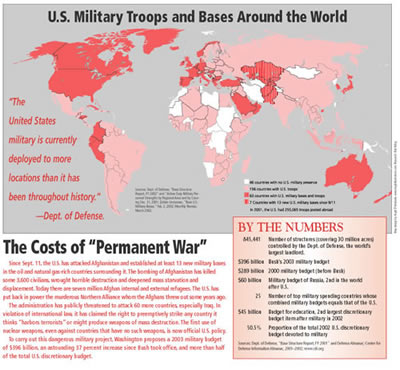
Map 2. The American Military Bases Around the World (2001-2003)
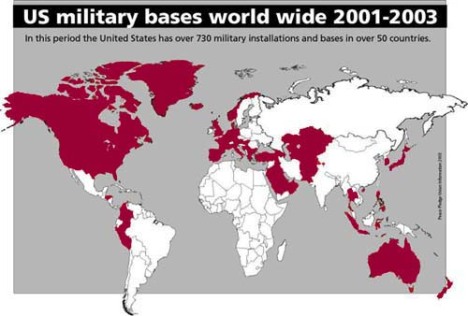
Map 3 US Military Bases
The Map of the World Network “No Bases” (Map 3) reveals the following:
Based on a selective examination of military bases in North America,Latin America, Western Europe, the Middle East, Central Asia, Indonesia,the Philippines and Japan, several of these military bases are beingused for intelligence purposes. New selected sites are Spy Bases andSatellite-related Spy Bases.
The Surface of the Earth is Structured as a Wide Battlefield
These military bases and installations of various kinds are distributed according to a Command structure divided up into fivespatial units and four unified Combatant Commands (Map 4). Each unit isunder the Command of a General.
The Earth surface is being conceived as a wide battlefield which can be patrolled or steadfastly supervised from the Bases.
Click here to see Map 3
NATO Military Bases
The Atlantic Alliance (NATO) has its own Network of military bases, thirty in total. The latter are primarily located in Western Europe:
Whiteman, U.S.A., Fairford,
Lakenheath and Mildenhall in United Kingdom,
Eindhoven in Netherlands,
Brüggen, Geilenkirchen, Landsberg, Ramstein, Spangdahlem, Rhein-Main inGermany,
Istres and Avord in France.
Morón de la Frontera and Rota in Spain,
Brescia, Vicenza, Piacenza, Aviano, Istrana, Trapani, Ancora, Pratica diMare, Amendola, Sigonella, Gioia dell Colle, Grazzanise and Brindisi inItaly,
Tirana in Albania,
Incirlik in Turkey,
Eskan Village in Soudi Arabia and
Alial Salem in Koweit
III. The Global Deployment of US Military Personnel
There are 6000 military bases and/ or military warehouses located in the U.S. (See Wikipedia, February 2007).
Total Military Personnel is of the order of 1,4 million of which 1,168,195 are in the U.S and US overseas territories.
Taking figures from the same source, there are 325,000 US military personnel in foreign countries:
- 800 in Africa,
- 97,000 in Asia (excluding the Middle East and Central Asia),
- 40,258 in South Korea,
- 40,045 in Japan,
- 491 at the Diego Garcia Base in the Indian Ocean,
- 100 in the Philippines, 196 in Singapore,
- 113 in Thailand,
- 200 in Australia,
and 16,601 Afloat.
In Europe, there are 116,000 US military personnel including 75,603 who are stationed in Germany.
In Central Asia about 1,000 are stationed at the Ganci (Manas) Air Base in Kyrgyzstan and 38 are located at Kritsanisi, in Georgia, with amission to train Georgian soldiers.
In the Middle East (excludng the Iraq war theater) there are 6,000 US military personnel, 3,432 of whom are in Qatar and 1,496 in Bahrain.
In the Western Hemisphere, excluding the U.S. and US territories, there are 700 military personnel in Guantanamo, 413 in Honduras and 147in Canada.
Map 3 provides information regarding military personnel on duty, based on a regional categorization (broad regions of the world). Thetotal number of military personnel at home in the U.S. and/or in USTerritories is 1,139,034. There are 1,825 in Europe 114, 660, 682 inSubsaharian Africa, 4, 274 in the Middle East and Southern Asia, 143 inthe Ex-USSR, and 89,846 in the Pacific.
IV. The Operational Cost of the Worldwide Military Network
US defense spending (excluding the costs of the Iraq war) have increased from 404 in 2001 to 626 billion dollars in 2007 according todata from the Washington based Center for Arms Control andNon-Proliferation. US defense spending is expected to reach 640 billiondollars in 2008.
Center for Arms control
These 2006 expenses correspond to 3.7% of the US GDP and $935.64 per capita
Figure 1. U.S. Military Expenditures since 1998

Source : Global Issues
According to Fig 1, the 396 billion dollars military budget proposed in 2003 has in fact reached 417.4 billion dollars, a 73% increasecompared to 2000 (289 billion dollars). This outlay for 2003 was morethan half of the total of the US discretionary budget.
Since 2003, these military expenditures have to be added to those of the Iraq war and occupation The latter reached in March 2007, accordingto the NationalPriorities Project
, a cumulative total of 413 billion dollars.
US defence budget will equal ROW combined “within 12 months
Estimates of the Defense Department budget needs, made public in 2006 in the DoD Green Bookfor FY 2007 are of the order of 440 billion dollars.
Military and other staff required numbered 1,332,300. But those figures do not include the money required for the “Global World onTerrorism” (GWOT). In other words, these figures largely pertain to theregular Defense budget.
A Goldstein of the Washington Post, within the framework of an article on the aspects of the National 2007 budget titled «2007 BudgetFavors Defense», wrote about this topic:
“Overall, the budget for the 2007 fiscal year would further reshape the government in the way the administration has been striving to duringthe past half-decade: building up military capacity and defensesagainst terrorist threats on U.S. soil, while restraining expendituresfor many domestic areas, from education programs to train service”
2007 Budget Favors Defense
V. US Military Bases to Protect Strategic Energy Resources
In the wake of 9/11, Washington initiated its “Global War on Terrorism” (GWOT), first in Afghanistan and then in Iraq. Othercountries, which were not faithfully obeying Washington’s directivesincluding Iran, North Korea, Syria and Venezuela have been earmarked forpossible US military intervention.
Washington keeps a close eye on countries opposed to US corporate control over their resources. Washington also targets countries wherethere are popular resistance movements directed against US interests,particularly in South America. In this context, President Bush made aquick tour to Brazil, Uruguay, Colombia, Guatemala and Mexico «topromote democracy and trade» but also with a view to ultimately curbingand restraining popular dissent to the US interests in the region. .
VOA
The same braod approach is being applied in Central Asia. According to Iraklis Tsavdaridis, Secretary of the World Peace Council (WPC):
“The establishment of U.S. military bases should not of course be seen simply in terms of direct military ends. They are always used topromote the economic and political objectives of U.S. capitalism. Forexample, U.S. corporations and the U.S. government have been eager forsome time to build a secure corridor for US.-controlled oil and naturalgas pipelines from the Caspian Sea in Central Asia through Afghanistanand Pakistan to the Arabian Sea. This region -has more than 6 percent ofthe world’s proven oil reserves and almost 40 percent of its gasreserves. The war in Afghanistan and the creation of U.S. military Basesin Central Asia are viewed as a key opportunity to make such pipelines areality.”
Stop USA
The US. are at War in Afghanistan and Iraq. They pursue these military operations until they reach their objective which they call“VICTORY”. According to Wikipedia,American troops fighting in these countries number 190,000. The“Enduring Freedom” Operation in Iraq alone has almost 200,000 militarypersonnel, including 26,000 from other countries participating to the USsponsored “Mission”. About 20,000 more could join other contingents inthe next few months. In Afghanistan, a total of 25,000 soldiersparticipate to the operation (Map 6 and Map 7).
Map 6. Petroleum and International Theatre of War in the Middle East and Central Asia
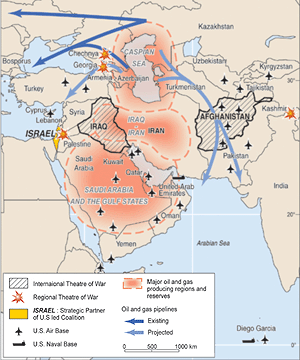 Central Asia"">
Central Asia"">
Map 7. American Bases Located in Central Asia

VI. Military Bases Used for the Control of Strategic Renewable Resources
US Military Bases in foreign countries, are mainly located in Western Europe: 26 of them are in Germany, 8, in Great Britain, and 8 in Italy.There are nine military installations in Japan (Wikepedia).
In the last few years, in the context of the GWOT, the US haa built 14 new bases in and around the Persian Gulf.
It is also involved in construction and/or or reinforcement of 20 bases (106 structured units as a whole) in Iraq, with costs of theorder of 1.1 billion dollars in that country alone (Varea, 2007) and theuse of about ten bases in Central Asia.
The US has also undertaken continued negotiations with several countries to install, buy, enlarge or rent an addional number ofmilitary bases. The latter pertain inter alia to installations inMorocco, Algeria, Mali, Ghana, Brazil and Australia (See Nicholson, B.,2007), Poland, Czech Republic (Traynor, I., 2007), Ouzbekistan,Tadjikistan, Kirghizstan, Italy (Jucca, L., 2007) and France.
Washington has signed an agreement to build a military base in Djibouti (Manfredi, E., 2007). All these initiatives are a part of anoverall plan to install a series of military bases geographicallylocated in a West-East corridor extending from Colombia in SouthAmerica, to North Africa, the Near East, Central Asia and as far as thePhilippines (Johnson, C., 2004). The US bases in South American arerelated to the control and access to the extensive natural biological ,mineral and water resources resources of the Amazon Basin. (DelgadoJara, D., 2006 and Maps 9 and 10).
VII. Resistance Movements
The network of US military bases is strategic, located in prcximity of traditional strategic resources including nonrenewable sources ofenergy. This military presence has brought about political oppositionand resistance from progressive movements and antiwar activists.
Demonstrations directed against US military presence has developed in Spain, Ecuador, Italy, Paraguay, Uzbekistan, Bulgaria and in many othercountries. Moreover, other long-termer resistance movements directedagainst US military presence have continued in South Korea, Puerto Rico,Guam, the Philippines, Cuba, Europe, Japan and other locations.
The Worldwide resistance to US foreign military bases has grown during the last few years. We are dealing with an International Networkfor the Abolition of US Military Bases.
Such networks’ objective is to broadly pursue disarmament, demilitarization processes Worldwide as well as dismantle US militarybases in foreign countries.
The NO BASES Network organizes educational campaigns to sensitize public opinion. It also works torehabilitate abandoned military sites, as in the case of Western Europe.
These campaigns, until 2004, had a local and national impact.
The network is now in a position to reach people Worldwide. The network itself underscores that “much can be gained from greater anddeeper linkages among local and national campaigns and movements acrossthe globe. Local groups around the world can learn and benefit fromsharing information, experiences, and strategies with each other”
“The realisation that one is not alone in the struggle against foreign bases is profoundly empowering and motivating. Globallycoordinated actions and campaigns can highlight the reach and scale ofthe resistance to foreign military presence around the world. With thetrend of rising miniaturization and resort to the use of force aroundthe world, there is now an urgent and compelling need to establish andstrengthen an international network of campaigners, organisations, andmovements working with a special and strategic focus on foreign militarypresence and ultimately, working towards a lasting and just system ofpeace»
No bases!
The Afghanistan and Iraq wars have, in this regard, created a favourable momentum, which has contributed to the reinforcement of themovement to close down US military bases in foreign countries:
“At the time of an International anti-war meeting held in Jakarta in May 2003, a few weeks after the start of the Iraq invasion, a globalanti-military Bases campaign has been proposed as an action to priorizeamong global anti-war, justice and solidarity movements»(http://www.no-bases.org/index.php?mod=network&bloque=1&idioma=en).
Since then, the campaign has acquired greater recognition. E-mail lists have been compiled nousbases@lists.riseup.net andnousbases-info@lists.riseup.net that permit the diffusion ofthe movement members experiences and information and discussionexchanges. That list now groups 300 people and organizations from 48countries. A Web site permits also to adequately inform all Networkmembers. Many rubrics provide highly valuable information on ongoingactivities around the World.
In addition, the Network is more and more active and participates in different activities. At the World Social Forums it organized variousconferences and colloquia. It was present at the European Social Forumheld in Paris in 2003 and in London in 2004 as well as at the theAmerica’s Social Forum in Ecuador in 2004, and at the MediterraneanSocial Forum in Spain in 2005.
One of the major gatherings, which was held in Mumbai, India, in 2004, was within the framework of the World Social Forum. More than 125participants from 34 countries defined the foundations of a coordinatedglobal campaign.
Action priorities were identified, such as the determination of a global day of action aiming at underscoring major issues stemming fromthe existence of US military bases. The Network also held fourdiscussion sessions at the Porto Alegre Social Forum in 2005. One ofthose pertained to the financing of the Network’s activities.
It is important to recall that the Network belongs to the Global Peace Movement. Justice and Peace organizations have become moresensitized on what was at stake regarding US military bases.
The Quito and Manta International Conference, Ecuador, March 2007
A Network World Conference for the Abolition of Foreign Military Bases was held at Quito and at Manta, Ecuador, from March 5 to 9 2007
The objective of the Conference was to underscore the political, social, environmental and economic impacts of US military bases, to makeknown the principles of the various Anti-Bases movements and toformally build the Network, its strategies, structure and Action Plans.The main objectives of the Conference were the following:
- Analyze the role of Foreign Military Bases and otherfeatures of military presence associated to the global dominancestrategy and their impacts upon population and environment;
- Share experiences and reinforce the built solidarity resulting from the resistance battles against Foreign military Basesaround the World;
- Reach a consensus on objectives mechanisms, on action plans, on coordination, on communication and on decision making of aGlobal Network for the abolition of all Foreign military Bases and ofall other expressions of military presence; and
- Establish global action plans to fight and reinforce the resistance of local people and ensure that these actions are beingcoordinated at the international level.
Conclusion
This article has focussed on the Worldwide development of US military power. The US tends to view the Earth surface as a vast territory toconquer, occupy and exploit. The fact that the US Military splits theWorld up into geographic command units vividly illustrates thisunderlying geopolitical reality. Humanity is being controlled andenslaved by this Network of US military bases. .
The ongoing re-deployment of US troops and military bases has to be analyzed in a thorough manner if we wish to understand the nature of USinterventionism in different regions of the World. This militarisationprocess is charactersied by armed aggression and warfare, as well asinterventions called “cooperation agreements”. The latter reaffirmedAmerica’s economic design design in the areas of trade and investmentpractices. Economic development is ensured through the miniaturizationor the control of governments and organizations. Vast resources arethereby expended and wasted in order to allow such control to beeffective, particuarly in regions which have a strategic potential interms of wealth and resources and which are being used to consolidatethe Empire’s structures and functions.
The setting up of the International Network for the Abolition of Foreign Military Bases turns out to be an extraordinary means to opposethe miniaturization process of the Planet. Such Network is indispensableand its growth depends on a commitment of all the People of the World.It will be extremely difficult to mobilize them, but the ties built upby the Network among its constituant resistence movements are a positiveelement, which is ultmately conducive to more cohesive and coordinatedbattle at the World level.
The Final Declaration of the Second International Conference against Foreign Military Bases which was held in Havana in November 2005 and wasendorsed by delegates from 22 countries identifies most of the majorissues, which confront mankind. This Declaration constitutes a majorpeace initative. It establishes international solidarity in the processof disarmament. .
(http://www.csotan.org/textes/texte.php?type=divers&art_id=267 ).
 PRESS RELEASE
PRESS RELEASE
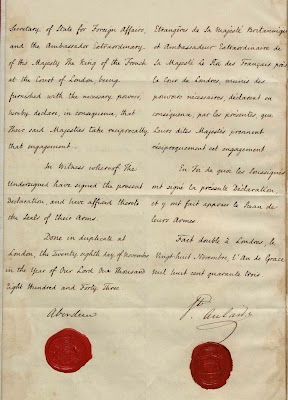
![Reblog this post [with Zemanta]](http://img.zemanta.com/reblog_e.png?x-id=d81aad28-5676-486c-b3f6-e84803bad22a)
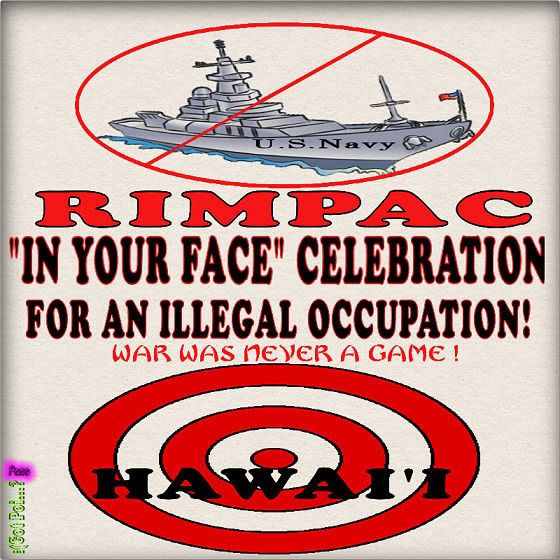

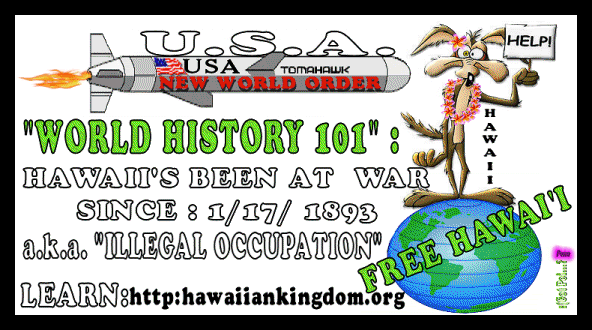

![Reblog this post [with Zemanta]](http://img.zemanta.com/reblog_e.png?x-id=0baee6ba-9c82-4db1-9fc2-1936f2258b77)

 problems" align="right" border="2" height="75" width="100"">
problems" align="right" border="2" height="75" width="100"">

 Do some soldiers enjoy killing? If so, why? This questionis thrust upon us by the recently released
Do some soldiers enjoy killing? If so, why? This questionis thrust upon us by the recently released  John Horgan, a former Scientific American staffwriter, directs the
John Horgan, a former Scientific American staffwriter, directs the 


![Reblog this post [with Zemanta]](http://img.zemanta.com/reblog_e.png?x-id=b715c98f-6e7f-4692-8017-26b04def27b0)



 Central Asia"">
Central Asia"">